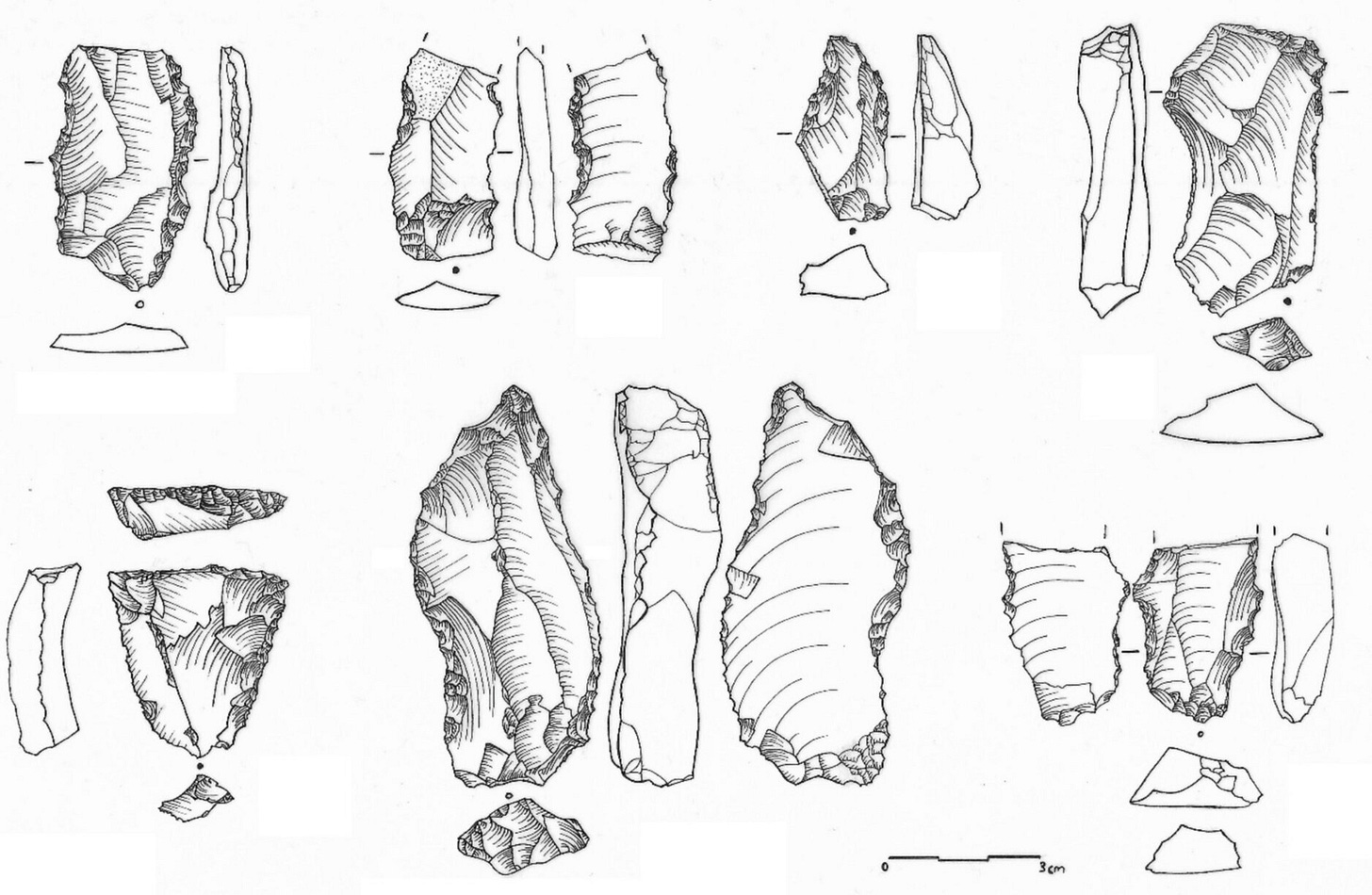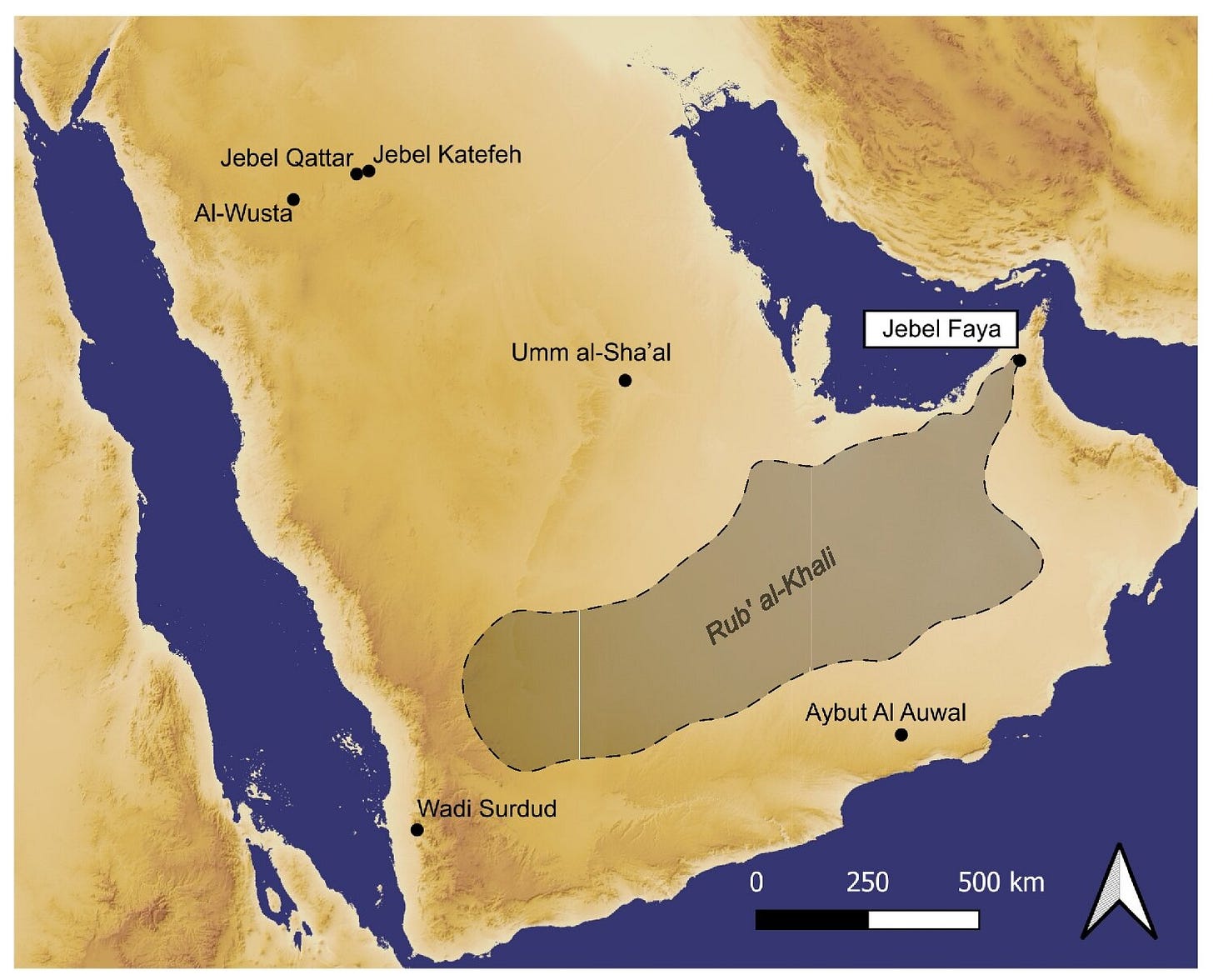
The story of human migration is often told in sweeping arcs—great waves of Homo sapiens leaving Africa, moving into Eurasia, and eventually populating the entire planet. But every now and then, a new discovery forces a rewrite of this narrative, reminding us that human history is more intricate than we once thought. One such discovery has emerged from the archaeological site of Jebel Faya, a rock shelter nestled in the Emirate of Sharjah, United Arab Emirates. Here, researchers have unearthed the oldest-known Middle Paleolithic stone tool assemblage in the region, dating back approximately 80,000 years, an era when the Arabian Peninsula was at the crossroads of human expansion.

The findings, published in Archaeological and Anthropological Sciences, offer crucial insights into early human technology and adaptation. The study, led by Knut Bretzke and a team of international archaeologists, geologists, and paleoenvironmentalists, reconstructs a vivid picture of a community of toolmakers refining their craft in a harsh yet resource-rich environment.
At the heart of the discovery is a remarkable collection of stone tools—long flakes with parallel edges, meticulously crafted using bidirectional techniques. These artifacts stand out for their sophistication, demonstrating a clear departure from earlier Middle Paleolithic traditions. The research team found that the tools were produced predominantly using Levallois and non-Levallois reduction strategies, with a strong preference for elongated blades rather than the triangular and ovoid flakes common in contemporary Arabian sites.
“One striking feature of the Jebel Faya assemblage is the presence of a laminar system,” the researchers explain. “The entire knapping sequence, from decortication to obtaining of end-products, is present in the lithic assemblage and indicates that blade production was carried out on-site.”
Unlike many stone tools found in Arabia, which tend to be more generalized, these blades suggest a higher level of planning and precision. The tools’ makers were not just chipping away at stones haphazardly; they were following a refined tradition, optimizing each flake for efficiency.
The implications of this discovery extend far beyond the blades themselves. The research suggests that the Arabian Peninsula, often seen as a mere corridor between Africa and Asia, was in fact a region of sustained human occupation and technological innovation.
“Our results contradict previous conclusions about the possibility of a 40,000-year-old occupation at this site,” the study states. “Instead, we provide new chronometric data indicating human presence at the end of the MIS 5 humid period, around 80,000 years ago.”

This challenges a long-standing assumption that early humans merely passed through Arabia on their way to more hospitable regions. Instead, the evidence suggests that Homo sapiens established enduring populations, adapting their tool-making strategies to the resources available in the region.
The study also raises intriguing questions about how climate shaped human movement. Around 80,000 years ago, the Arabian Peninsula was transitioning from a wetter phase to a drier one. Did these early toolmakers migrate northward as conditions worsened, or did they remain, eking out a living in an increasingly arid landscape? The absence of human remains at Jebel Faya leaves these questions open, but the stone tools speak volumes about the resilience of these early inhabitants.
Perhaps the most fascinating aspect of this research is how it highlights regional differences in stone tool production. Contemporary sites in northern Arabia, such as those in the Nefud Desert, primarily feature centripetal Levallois methods—technologies associated with classic Middle Paleolithic traditions. In contrast, the assemblage at Jebel Faya shows a clear shift toward bidirectional reduction, emphasizing the production of elongated flakes and blades.
This suggests that different groups across Arabia may have been developing their own localized traditions rather than adhering to a single, uniform technological culture.
“The focus on the production of blades and elongated flakes using bidirectional reduction at Jebel Faya at about 80,000 years ago is complemented by evidence from Dhofar, southern Oman,” the researchers note. “Here, lithic records indicate a distinct trajectory toward Nubian technology.”
The Rub’ al Khali, the vast desert that stretches across much of southern Arabia, may have acted as a geographic barrier, fostering these divergent technological traditions. This underscores a broader theme in human prehistory: adaptation is rarely uniform, and local conditions play a profound role in shaping cultural evolution.
The discoveries at Jebel Faya open the door for further research into early human settlement in Arabia. Future excavations could uncover additional layers of occupation, perhaps even yielding skeletal remains that might clarify the identity of these toolmakers.
Additionally, ongoing paleoenvironmental studies may shed light on how shifting climates influenced migration and settlement patterns. Did these early inhabitants leave behind genetic legacies in modern populations? How did their technologies influence later cultural developments in the region? These are the questions that will shape the next phase of research.
For now, the stone blades of Jebel Faya stand as a testament to the ingenuity of early humans. Far from being passive travelers through a barren landscape, they were innovators, shaping their world one flake at a time.
-
Bretzke, K., et al. (2025). Archaeology, chronology, and sedimentological context of the youngest Middle Palaeolithic assemblage from Jebel Faya, United Arab Emirates. Archaeological and Anthropological Sciences, 17:60. DOI: 10.1007/s12520-025-02164-z
-
Rose, J.I., et al. (2011). The Nubian Complex of Dhofar, Oman: An African Middle Stone Age Industry in Southern Arabia. PLoS ONE, 6(11), e28239. DOI: 10.1371/journal.pone.0028239
-
Groucutt, H.S., et al. (2018). Homo sapiens in Arabia by 85,000 years ago. Nature Ecology & Evolution, 2, 800–809. DOI: 10.1038/s41559-018-0518-2
-
Petraglia, M.D., et al. (2012). Hominin dispersal into the Nefud Desert and Middle Paleolithic settlement along the Jebel Qattar and Jebel Katefeh. Quaternary Science Reviews, 57, 32–47. DOI: 10.1016/j.quascirev.2012.11.008







